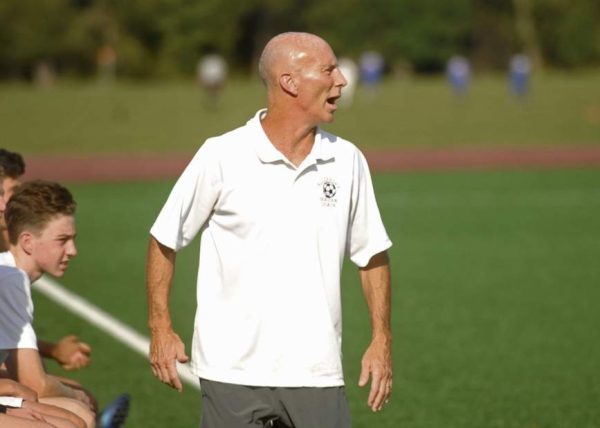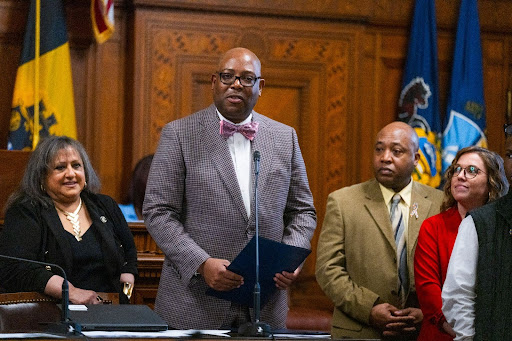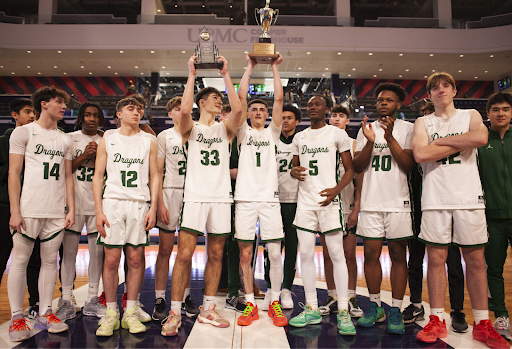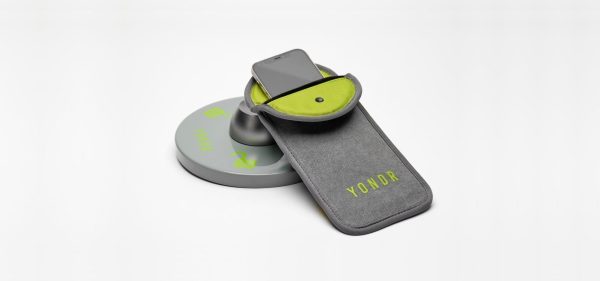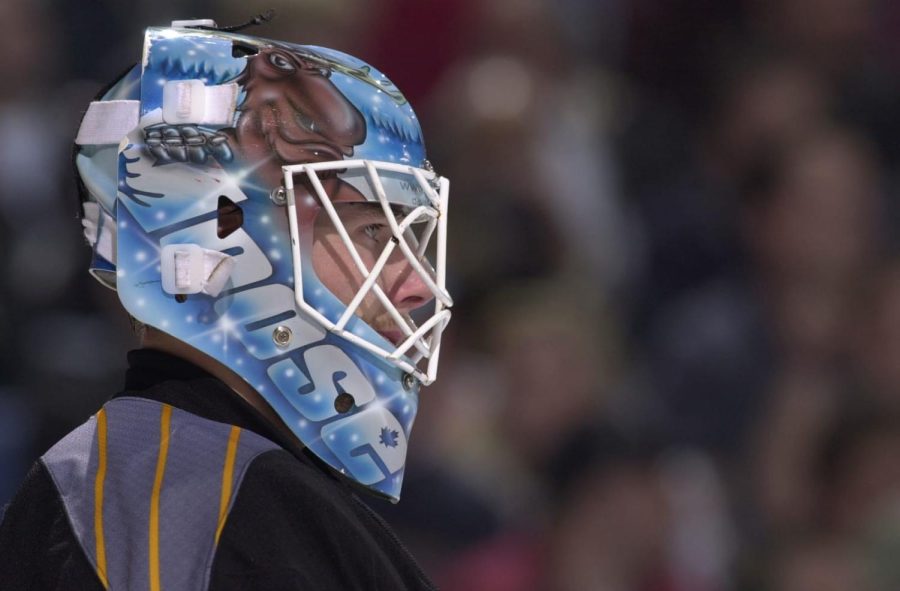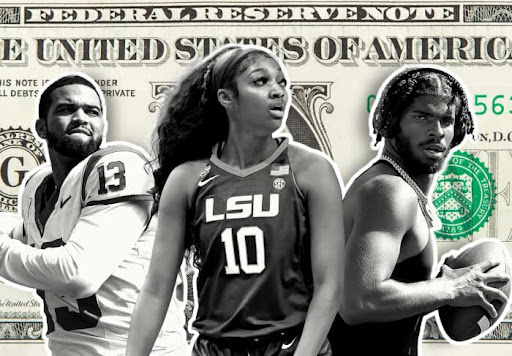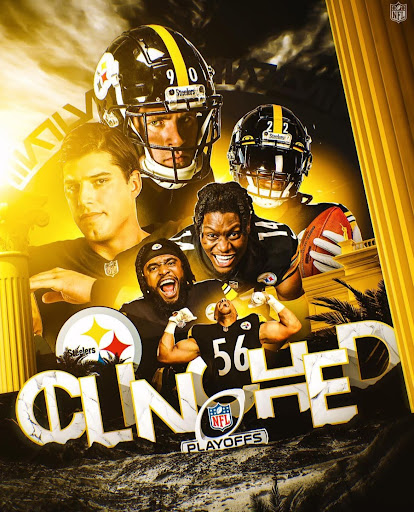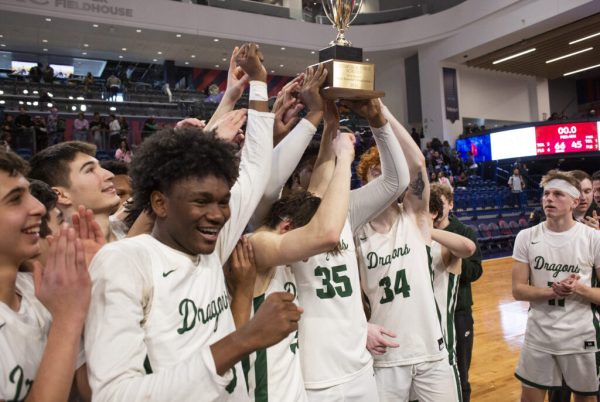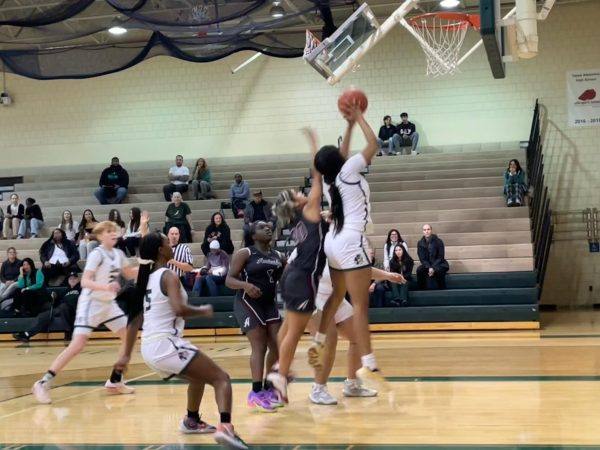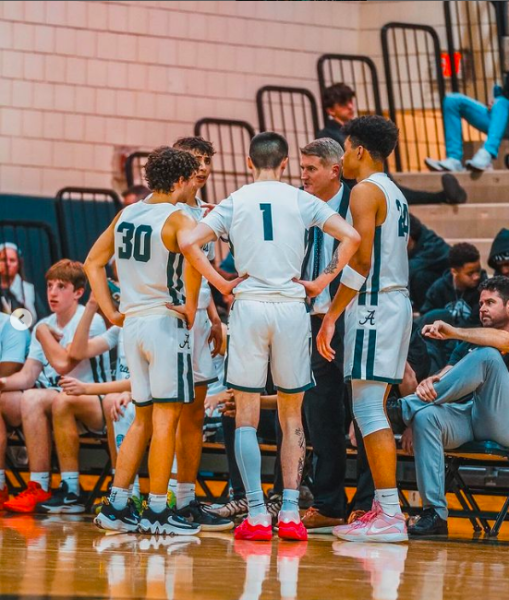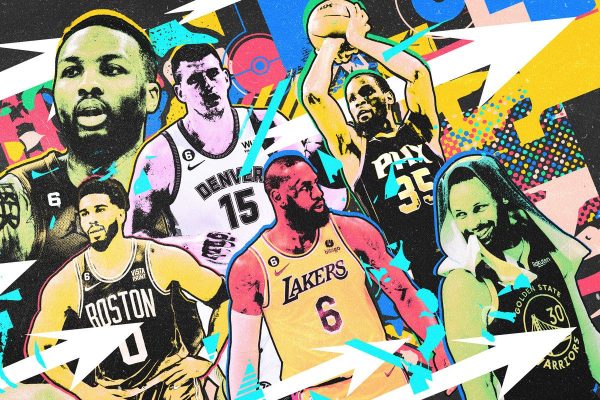The Journeyman Career Of Penguins Legend Johan “Moose” Hedberg
Overlooked for a large part of his early career, Johan Hedberg broke through and had an NHL career that lasted over a decade. He played for five different NHL teams during that time frame, and frequently became a fan favorite for the teams he played for.
He was described as someone with an impeccable work ethic and a great locker room teammate. His underdog success story in Pittsburgh is amongst my favorites in Penguins lore.
But Hedberg’s entire career is one of fascination to me, and the story of the Penguins’ folk hero’s time both in Pittsburgh and in other cities across the NHL is quite intriguing.
Hedberg was overlooked by many NHL teams prior to his debut. He was not selected until the 9th round of the NHL Entry Draft back in 1994. For reference, there no longer is a 9th round of the draft.
However, the Philadelphia Flyers, the team who drafted him, did not give him an invite to the team’s training camp, instead telling him he needed to make the Swedish national team to qualify for a training camp invite.
Hedberg worked towards and did make it to the Swedish national team, but he never got that Flyers invite.
After five years playing for Leksands IF of the Swedish Hockey League, Hedberg jumped to North America in 1997 in the hopes that a pro team would be impressed by his play.
He started out with the Baton Rouge Kingfish of the East Coast Hockey League, and also played for the Detroit Vipers and Manitoba Moose who, at the time, were both part of the now defunct International Hockey League.
While bouncing around minor leagues, the Flyers traded the rights to Hedberg to the San Jose Sharks for a 7th round pick, and after Hedberg returned to Sweden and Leksands IF for the 1998-99 season, Hedberg reported to the Kentucky Thoroughblades, who at the time were the American Hockey League affiliate of the Sharks.
In 33 games for Kentucky, Hedberg recorded a 2.68 goals against average and a .917 save percentage.
The Sharks organization was overflowing with great goaltenders in the early 2000s, with names like Miikka Kiprusoff, Steve Shields, and 2001 Calder Trophy winner Evgeni Nabokov, leaving Hedberg as the 4th goalie on the San Jose depth chart.
After that year, Hedberg returned to the Manitoba Moose, where he continued to put up good numbers. In 46 games for Manitoba, he had a 2.56 goals against average and a .912 save percentage.
Then, one day in Winnipeg, everything changed.
Hedberg’s performance in net for Manitoba caught the eyes of Edde Johnston, assistant general manager for the Penguins, and he soon looked to help execute a trade.
On March 12, 2001, Hedberg’s coach Randy Carlyle had pulled Hedberg aside and told him that he had been traded to the Pittsburgh Penguins organization.
The trade included Hedberg along with defenseman Bobby Dollas to the Penguins in exchange for defenseman Jeff Norton.
But the biggest part of this trade? Hedberg was to report directly to the NHL for the Penguins.
At the time Hedberg arrived in Pittsburgh, the Penguins were fighting for their playoff lives. The enthusiasm from Mario Lemieux’s return to hockey had started to wane, and goalies Jean-Sebastian Aubin and Garth Snow were struggling to hold down the fort in net.
Johan Hedberg made his NHL debut on March 16, 2001, and the “Moose” was born.
Hedberg, while playing for the Moose, was sporting a mask with, you guessed it, a large moose on it. Since he reported straight to Pittsburgh after the trade, he didn’t have time to have a new goalie mask created, forcing him to still use his Manitoba Moose mask when he debuted for the Penguins.
The bright blue Manitoba colors and the gigantic moose had quite obviously clashed with the black and yellow look of the Penguins. The look was instantly, albeit accidentally, iconic.
But it wasn’t just the mask that stood out to fans, his play on the ice did too. Hedberg saved 41 shots in a 6-3 win for Pittsburgh in his debut, and after a rough second game against Tampa, he bounced back and backstopped the Penguins to a playoff spot. By the time Hedberg could have had a new Penguins mask made, the moose mask had become a part of his identity as a Penguin, and he had to keep it.

Fans rallied around Hedberg and his moose mask, giving him the nickname Moose and bringing foam antlers to games in support. While often misperceived as a “boo” by spectators (and even Hedberg himself at first) the crowd had come accustomed to chanting “moose” after he made saves.
“I remember the first game against Washington in the playoffs, I thought I was having a good game,” Hedberg said in an interview with the Trib in 2021. “And everybody was booing every time I touched the puck. Then I realized it’s ‘moose’ not a ‘boo.’ Then it snowballed from there. The foam antlers and everything else.”
Moose Mania was alive in Pittsburgh as the Penguins qualified for the playoffs, and turned to Hedberg for the starter’s job in net for the postseason. Hedberg had delivered phenomenally, and would backstop an incredible playoff run as well.
The Moose recorded a 2.29 goals against average and a .911 save percentage in 18 playoff starts as he helped lead the Penguins on an improbable run to the Eastern Conference Finals.
And the competition Hedberg faced in net was legendary. Hedberg and the Penguins went through Olaf Kölzig (winner of the Vezina Trophy the season prior) of the Washington Capitals, and Hall of Famer Dominik Hašek of the Buffalo Sabres to make it to the final four.
He had become a hero to this team, a team that still boasted both Mario Lemieux and Jaromír Jágr.
However, the Penguins’ run would be stopped dead in its tracks when they met New Jersey in the conference finals. The Devils dismantled Pittsburgh in 5 games, and Devils goaltender, another Hall of Famer in Martin Brodeur, had become the first goalie in the postseason to best Hedberg.
Hedberg didn’t have a stellar series by any stretch, but he was not the only problem for the Penguins against the Devils. Pittsburgh’s offense was shut out in back to back games, dooming their hopes of staying in the series.
Hedberg’s success as a Penguin that season propelled him to the starter’s job for the next two years, however, his team would not see nearly the same success.
Some of the Moose’s magic had faded, and the Penguins had fallen on hard times financially in the early 2000s. To make matters worse, the team was forced to trade Jaromir Jagr in the ensuing offseason after the conference finals appearance. Hedberg’s numbers predictably slipped behind a vastly weakened team as Pittsburgh finished last in their division in both 2001-02 and 2002-03.
In the summer of 2003, after drafting Marc-Andre Fleury with the first overall pick in that year’s draft, the Penguins flipped Hedberg to the Vancouver Canucks for a 2004 second round pick, which would become Alex Goligoski.
Goligoski, still active in the NHL today, would play 177 games as a Penguin, contributing to their 2009 Cup win before being used to bring James Neal to Pittsburgh.
Hedberg played as the backup goalie to Dan Cloutier in his only season in Vancouver, playing in 21 games and putting up an even .900 save percentage and a 2.51 goals against average.
Hedberg played in two games for the Canucks during their postseason appearance, as part of a trio of Canuck goalies to play in that series, along with Cloutier and 23-year-old Alex Auld. Despite the trio’s best efforts, the Canucks lost to Calgary in seven games.
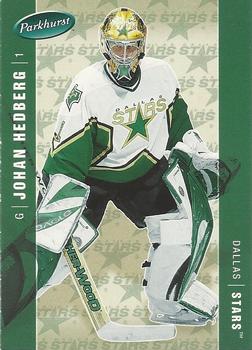
Hedberg was slated to play with the Canucks the following season too, but the 2004-05 NHL lockout caused Hedberg to go back to Sweden, reuniting with his old team and playing out the 2004-05 season there.
Once the lockout was over, Hedberg signed as a free agent with the Dallas Stars, but like Vancouver, he would only be in Dallas for one year. Hedberg played as backup to Marty Turco, however both would see some struggles in net. Both Hedberg and Turco had a sub .900 save percentage that season, but Hedberg did find a way to contribute in an uncommon manner, at least for one night.
In a game between the Stars and St. Louis Blues, Hedberg recorded two assists in the game. It was the first time in Stars history that a goaltender had done that, and it was the first time in nearly 5 years any NHL goaltender had achieved that.
The Stars opted not to re-sign Hedberg, letting him walk as a free agent in 2006. That summer, he signed a two year deal with the Atlanta Thrashers, where he was brought in to be the veteran mentor and backup young promising netminder Kari Lehtonen.
Hedberg would play in 21 games that season, and just like he did in Pittsburgh, became a fan favorite in Atlanta. The “Moose” calls had faded out in Vancouver and Dallas, but came back in full force at Philips Arena.
He couldn’t improve from his .898 save percentage from his one year in Dallas, but was able to keep Atlanta afloat and boost them to their first playoff berth in franchise history.
In the postseason that year, after falling 2-0 in their first round series against the New York Rangers, the Thrashers turned to Hedberg to start in net in hopes of turning the series around. However, despite Hedberg’s steady presence in net, the Thrashers were swept in four games in what would be their only playoff appearance as the Atlanta Thrashers.
Kari Lehtonen would suffer several major injuries in his young career, giving Hedberg the net far more often than he or the Thrashers envisioned. In the 2007-08 season Lehtonen played in only 48 games, giving Hedberg an appearance in 36. Ondrej Pavelec, a second round pick by Atlanta in 2005, would also see brief action that year.
Hedberg’s numbers slipped as the Thrashers’ performance did. The Thrashers started out the 2007-08 season 0-6, leading to the firing of head coach Bob Hartley. Atlanta was able to battle back and become a .500 club in early December, but by the All Star Game that season (which Atlanta hosted that year), the Thrashers were falling in the standings, and by March, they had plummeted out of the playoff race.
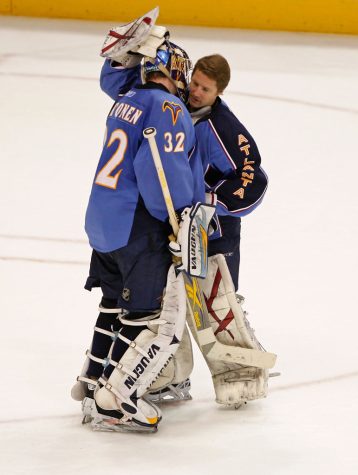
Hedberg finished the season with a .892 save percentage and a 3.46 goals against average.
With goaltending still a big question for the club, the team re-signed Hedberg to a two year extension.
The following season would see similar hardship. Lehtonen could appear in only about half the team’s games, leaving 33 games to Hedberg and the other 12 to Pavelec.
Hedberg suffered the worst statistical season of his NHL career in 2008-09, falling to an .886 save percentage and a 3.49 goals against average. The Thrashers themselves had another hard year, finishing 35-41-6, but that overall record gets a boost from the team going 12-6 to end the year.
Going into 2009-10, Kari Lehtonen’s career was considered to be in jeopardy as he began the season on injured reserve. Lehtonen’s continued injury forced the Thrashers to once again turn to the tandem of Hedberg and Pavelec.
Perceived as temporary at first, the tandem of Hedberg and Pavelec would be solidified when the Thrashers traded Lehtonen in early February of 2010.
Hedberg, now in a more prominent role than ever, experienced an amazing turnaround, following up one of the worst seasons of his career with one of his best. In a career high 47 games played, Hedberg sported a .915 save percentage and a 2.62 goals against average. Despite his best efforts, the Thrashers still struggled, battling for the chance at a possible playoff berth.
The Thrashers would finish second in a weak Southeast Division, their best finish during Hedberg’s time in Atlanta. But it was not enough for a playoff berth, as the Thrashers finished 5 points out of a spot. Despite Hedberg’s personal success that season, the Thrashers did not re-sign him, sending him back into free agency.
Hedberg’s success as a Thrasher landed him a one year deal with the Devils in the summer of 2010, reuniting him with Kovalchuk. The 37 year old Moose was also given some job security behind Hall of Famer Martin Brodeur, receiving a no movement clause in his deal.
As backup to Brodeur, Hedberg appeared in 34 games, allowing the Devils to give Brodeur some much needed nights off. His numbers remained solid on a Devils team that boasted a lot of young talent up front.
After a disappointing 2010-11 campaign that saw the Devils miss the playoffs, New Jersey extended him in the summer of 2011 to a contract almost identical to his first with the Devils.
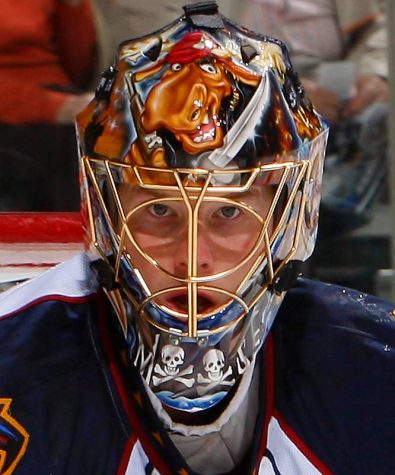
Also happening in the summer of 2011, however, was the slow motion collapse of the Thrashers organization. Years of unstable ownership had taken its toll on the Thrashers, who were left virtually neglected by their owners.
In May of 2011, the owners known as the Atlanta Spirit Group sold the Thrashers to True North Sports And Entertainment, who followed through on their very public goal of relocating the team to Winnipeg, Manitoba.
Ironically enough, Hedberg’s old team, the Manitoba Moose, would end up becoming the American Hockey League affiliate of the new Winnipeg Jets.
Hedberg became outspoken in support of Thrashers fans and the team remaining in Atlanta.
“I think it’s sad for the city. I believe this city can support a team and support it in a good way,” he said. “Obviously, it’s been some chaotic years pretty much from Day 1 with ownership not being on the same page and I think that has hurt the franchise quite a bit.”
He praised the fans of Atlanta, saaying “They’re hard-core fans that really don’t want to lose the team.”
Hedberg also criticized Atlanta Spirit Group, saying, “There’s no doubt that this could be a good hockey city, but it needs to be done the right way. This ownership group has never given it a chance to do that after it got off on the wrong foot.”
Hedberg followed up his first year with the Devils with his best season in the NHL. The Moose put up a .918 save percentage and a 2.22 goals against average, helping the young Devils to qualify for the Stanley Cup Playoffs in 2012.
Despite very little postseason action, Johan Hedberg had come oh so close to a Stanley Cup.
The 2012 Devils made an improbable run to the Stanley Cup Finals on the backs of guys like Kovalchuk, Zach Parise, Bryce Salvador, Travis Zajac, and Adam Henruqie. But the run was not to last. New Jersey was stalled by the Los Angeles Kings, falling down 3-0 in the series and eventually losing in 6 games.
The Devils brought back the Moose on a two year deal, starting with the lockout shortened 2012-13 season, but New Jersey couldn’t replicate their 2011-12 success, and missed the playoffs again.
The 2012 run would be the last time New Jersey would win a series until 2023, and they would only make the playoffs one other time during that span, getting bounced in round one against Tampa Bay in 2018.
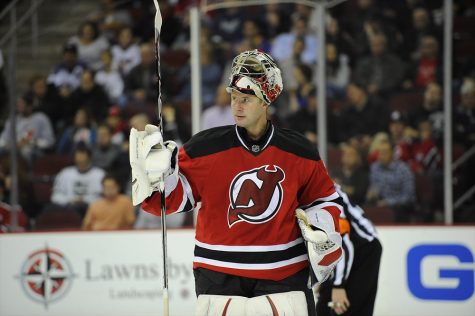
Hedberg’s numbers plummeted, and he put up the worst save percentage of his career at .883, and during the ensuing offseason, the Devils bought out the remainder of Hedberg’s contract.
The Moose signed a professional tryout with the New York Rangers, filling in for the absent Martin Biron, but once Biron came back, the Rangers released him. His last professional game was during the 2013-14 season, playing in his one and only game for the AHL’s Albany Devils.
Hedberg would rejoin the Devils organization as a special assignment scout, and then reunited with head coach Peter DeBoer in San Jose a few years later, where Hedberg served as the team’s goaltending coach until the Sharks cleaned house in late 2019. He described the coaching opportunities he found as kind of something that fell into his lap, but he took those lessons and today, is the head coach of Mora IK, in the Swedish Hockey League.
Alex Kiger is a Senior at Pittsburgh Allderdice High School. He is the Sports Editor at The Foreword from 2021 to 2023. In his free time he can often be...

